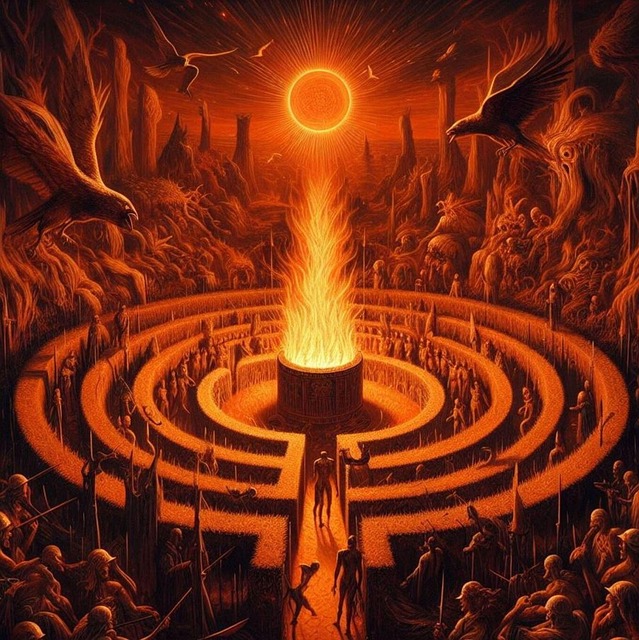State and Power
States are central to development and human well-being. In Afghanistan, Haiti, and the Democratic Republic of Congo, which for many contemporary commentators epitomize weak or fragile states, the inability to provide security and establish a presence throughout their territory has left local communities vulnerable to warlords and militias and undermined the prospect of economic growth and basic social provision.
Other states, for instance Nicaragua, Nigeria, and Peru, have been better able to bring an end to enduring cycles of civil violence and warfare. Yet the provision of basic security and public goods remains fragmented and confined to certain territorial areas, leaving out substantial parts of the population.
Unlike these countries, a wide range of others, including Costa Rica and the Indian state of Kerala, while by no means endowed with a strong state by any conventional means, have even managed to achieve certain levels of economic and social well-being.
To better understand what enables some states to secure peace and promote economic growth, welfare, and democracy, it is necessary to sharpen our understanding of what we mean by weak and strong states by unpacking the much-abused concepts of state strength and weakness.
Part2
When scholars wrestle with state strength, they usually resort to assessing state capacity, which is broadly a function of state bureaucracy, the state’s relations with social actors, and its spatial and societal reach. High-capacity states are seen as generally better equipped to establish a monopoly of violence, enforce contracts, control their populace, regulate institutions, extract resources, and provide public goods.
Analysts view state capacity as crucial to explain outcomes as diverse as economic growth and development (e.g., Coatsworth 1998; North 1981), democratization and democratic stability (e.g., Linz and Stepan 1996; O’Donnell 1993), citizenship regimes (e.g., Yashar 2005), social
welfare provision (e.g., Skocpol 1992; Steinmetz 1993), as well as identity politics and political culture (e.g., Berezin 1997; Kertzer and Arel 2001).
Likewise, state capacity has been identified as critical for explaining variations in state surveillance (e.g., Torpey 2000), nationalism (e.g., Gellner 1983), civil violence (e.g., Fearon and Latin 2003; Goodwin 2001), the intensity of international wars (e.g., Centeno 2002), and state-sponsored violence against their own populace (e.g., Straus 2006; Rogers 2006).
Part3
Yet scholarly attention to the different dimensions of state capacity has been uneven.
Two broad and well-developed research programs trace variations of state capacity to the relative autonomy of the state from societal actors (e.g., Bates 1981; Evans 1995; Marx 1978; Nordlinger 1981; Skocpol 1979; Waldner 1999) and the professionalization (or “Weberianess”) of its bureaucracy (e.g., Carpenter 2001; Evans and Rauch 1999; Geddes 1994; Skowronek 1982; Weber 1968). Beyond these systematic research programs, scholars explore the manifold impacts of a third dimension, often called state reach or power.
To give but two examples, Jeffrey Herbst (2000, 173) explores “the inability of African states to project power over distance.” Theda Skocpol’s (1979) classic study of the origins of social revolution argues that the “weakening grip of the civil administration over the country” (p. 74) contributes to the fiscal crisis of the old regime and plays a fundamental role in its collapse.
Part5
The heterogeneity of terminology has contributed to some imprecision about the meaning of state strength or state power, but re-examining this body of research with Mann’s concept in mind creates greater conceptual clarity and generates significant payoffs for knowledge accumulation. In other words, a wide variety of scholars would benefit from drawing explicit connections between their analyses and Mann’s framework of infrastructural power.
Many scholars of democracy are concerned with the strength or evenness of the state. Juan Linz and Alfred Stepan (1996: 11) write, “modern democracy … needs the effective capacity to command, regulate, and extract.”
Democracy cannot be consolidated where the state cannot reach through society to enforce its policies. Guillermo O’Donnell (1993) more explicitly explores the territorial aspect of state strength in his discussion of “brown areas” and the limitations of democracy.
A similar focus on the ability of the state to implement policy throughout its territory has long characterized the study of insurgency and revolution. A weak state—lacking those implementation capabilities—determines the presence and persistence of domestic conflict (Fearon and Latin 2003) and is a necessary condition for social revolutions to occur (Goodwin 2001; Skocpol 1979). Scholars also highlight the presence of the state when explaining its role in influencing ideology and culture (Wuthnow 1989), as well as defining subjects and social identities (Wimmer 2002).
A state whose coercive and regulatory institutions do not reach through society is unlikely to develop the symbolic power of being seen as an almost natural force in shaping the daily lives of its populace (Loveman 2005). Thus, scholars of many aspects of politics and state-society relations explore precisely those aspects of the state captured in Mann’s concept of infrastructural power.

Part7
The Revolutionary Armed Forces of Colombia (FARC) and the National Liberation Army (ELN) confront a state that has not built significant infrastructure in the rural regions of the country, but that remains quite effective in the major cities—and particularly in the capital of Bogotá.
Similarly, cities can also be places where state infrastructural power is severely limited. In Nicaragua’s capital city of Managua, security and social provision are confined to territorial pockets inhabited by elite sectors of the population, whereas in most of the city state power is eclipsed by social monopolies of violence exercised by gangs and drug syndicates (Rogers 2006).
The spatial unevenness of the state’s capacity in Colombia and Nicaragua can best be understood with reference to Mann’s conceptual framework. A focus on the effects of uneven state infrastructural power directs scholars to subnational investigation of the dynamics of the state at the local and regional level.
A subnational approach to the state’s ability to exercise control and regulate social relations is also a central feature of several of the articles in the present collection, in particular Daniel Ziblatt’s study on public good provision in nineteenth-century German cities and Daniel Schensul’s analysis of urban development in post-Apartheid Durban.
Second, Mann’s concept emphasizes the relational nature of state capacity. Infrastructural power not only radiates from the administrative activities of states, it is also grounded in the organizational entwining (Gorski 2003) between state and nonstate actors.
For instance, when analysing the power of local state actors, the power of the Manchester (England) City Council to initiate and coordinate the urban regeneration of this old industrial city was significantly enhanced by private support through institutionalized connections between city authorities and local economic elites (Kidd 2006).
Part9
Weberianess focuses on the nature of the bureaucracy. There is a relationship between the training and expertise of the bureaucracy, and the ability of the state to enforce policies, since policy is frequently enforced by state agents.
Yet, as Ziblatt shows in his contribution to this collection, we can differentiate between the professionalism of the state bureaucracy and the state’s power by distinguishing between the capacity of higher-level bureaucrats designing policy and of the lower rungs of the civil service hierarchy who implement it.
While the characteristics of the higher rungs capture bureaucratic professionalism, the characteristics of the lower ranking members provide information about the implementation ability of the state.
Although infrastructural power is distinct from both autonomy and bureaucracy of the state, its relationship to these other aspects of state capacity is more than simply additive. The essays assembled in this issue suggest some initial steps toward unpacking the causal relationships between these distinct dimensions, pointing to avenues for further research.
As it stands, the causal impact of bureaucracy on state infrastructural power remains uncertain. Schensul’s article identifies the Weberianess of Durban’s bureaucracy as a necessary condition for the state’s ability to transform the city’s spatial hierarchy. Ziblatt also suggests that bureaucratic professionalism (in his case, at the local level in a federal system) has the potential to generate infrastructural power.
Thus, bureaucratic professionalism is one potential factor among many possible causes of state infrastructural power. Conversely, the causal influence of state infrastructural power on bureaucratic professionalism is arguably more direct. Infrastructural power is crucial for the Weberian performance of state apparatus.
As Soifer argues, the inability of the state to penetrate civil society through routine communication and regulatory means undermines the construction of an efficient state bureaucracy. Infrastructural power is perhaps a necessary condition for bureaucratic effectiveness.
Part11
Yet state violence is not necessarily a sign of an infrastructurally weak state. Even infrastructurally strong states may resort to force under some circumstances. We can see this, for example, in the repression exercised by the Pinochet government in Chile after it came to power in 1973.
Although it does not shape the level of violence, infrastructural power may shape the forms of violence employed by the state. Kalyvas (2006), as discussed in more detail in Soifer’s essay, has argued that infrastructural power influences the selectivity of state violence.
A comparison of the violence inflicted by Latin America’s military governments of the 1970s against civil society actors shows that the Chilean state was more selective and effective in its repression than its counterpart in Argentina, where a much higher level of violence was less effective in silencing opposition.
The Weberian conception of the state highlights the fact that infrastructurally strong states have a unique claim to the legitimate violence, yet it does not shed light on the level of violence that they exercise.
In turn, violence exercised by nonstate actors may also be shaped by the state’s infrastructural power. As Matthew Lange and Hrag Balian show in their article, there are two countervailing views of the relationship between state power and civil violence.
On the one hand, civil violence may characterize infrastructurally weak states, which lack the power to contain it. Another logic holds that the state’s capability to control and regulate social relations—its infrastructural power—is precisely the trigger instigating violence by societal actors.
These competing mechanisms complicate the relationship between infrastructural power and the various forms of civil violence. As with state violence, violence by nonstate actors sheds no clear light on the infrastructural power of the state, but points to the need for context-specific analyses of the relationship between infrastructural power and violence.

Part4
A closer examination of these studies—as well as many others—reveals a common object of study. By state reach, power, and the like, these scholars are in fact exploring what Michael Mann has called the infrastructural power of the state: its institutional capability to exercise control and implement policy choices within the territory it claims to govern.
The ability of the state to exercise control and implement policies varies widely: states that are weaker in this regard are unable to assess and collect taxes, or even effectively carry out a national census.
Despite Mann’s development of the concept of infrastructural power more than two decades ago, social scientists have not developed the body of empirical and conceptual knowledge around it, which has characterized the research programs based on the autonomy and bureaucracy of the state.
The goal of this collection of articles is to provide a roadmap for filling that void, demonstrating the utility of the conceptual framework of infrastructural power for precisely assessing the reach or power of the state, and for developing explanations of its origins and effects.
While few scholars have engaged explicitly with Mann’s concept, many have explored precisely these aspects of the state and its relations with societal actors under other terminology. For example, Lawrence Boudon (1996: 288) defines the Colombian state’s weakness as its inability “to establish its legal authority and legitimacy throughout the entire national territory.”
Deborah Yashar (2005: 6) defines the “reach” of the state as its “actual penetration throughout the country and its capacity to govern society,” which also fits very closely with Mann’s concept of infrastructural power
Part6
The focus of many economic historians on the effectiveness of property rights and on the public goods provided by the state reveals the importance of Mann’s concept in that field. For example, John Coatsworth’s (1998) investigation of the roots of economic stagnation in nineteenth-century Latin America argues that the provision of security, infrastructure, and other basic functions by states is a fundamental requirement for economic growth.
Analogously, the ability of the state to enforce laws—particularly the laws governing property rights—is central to Douglass North’s (1981) account of economic development. As such, economic historians are centrally concerned with the ability of the state to penetrate society and implement its chosen policies.
In studying this aspect of the state, Mann’s conceptual framework has two significant advantages in that it highlights the spatial dimension of the state and the relational nature of its power. The ability of states to carry out their projects is territorially organized and crucially shaped by the organizational networks that they coordinate, control, and construct.
Thus, examining state infrastructural power draws attention to subnational territorial variation in the ability of the state to exercise control and regulate society, and draws scholars to subnational comparison in addition to cross-national research (see Snyder 2001). For example, the territorial variation in the power of the state underlies the emergence and persistence of the Colombian insurgency.
.
Part8
Moreover, state infrastructural power is shaped by the relationships among different state agencies themselves. For example, it is not clear whether educational bureaucrats and public-school teachers in Venezuela will submit to the recent school curriculum changes ordered by President Hugo Chávez.
The relational nature of infrastructural power allows analysts to move past debates that juxtapose state and society as opponents to examine the varied forms of their interaction. In this collection of articles, Matthias vom Hau’s essay on nationalism in Mexico and Argentina develops this point more explicitly.
Drawing Conceptual Boundaries
The spatial and relational focus of the concept also helps to demonstrate the central place of state infrastructural power in a variety of research areas without engaging in the sort of conceptual stretching criticized by Giovanni Sartori (1970), David Collier and Steven Levitsky (1997), and Gary Goertz (2005). Instead, as the articles in this issue show, it is important to distinguish carefully between this aspect of state capacity and others.
State infrastructural power must be distinguished from the well-developed concepts of state bureaucracy and state autonomy, and from Mann’s concept of despotic power.
Mann’s conception of the state draws both on Karl Marx and on Max Weber, and his conception of infrastructural power falls more in the Weberian tradition of statist analysis.
The state’s despotic power refers to the range of policies that it can order in Mann’s analogy from Alice in Wonderland, the despotic power of the Red Queen refers to her ability to order one’s head to be cut off.
The extent of the state’s freedom from societal constraints on policy choice is shaped largely by its autonomy from societal actors, or the extent to which state leaders can enact their own preferences into policy.
Infrastructural power, which captures the ability of the Red Queen to hunt down Alice and enforce her decapitation, is related to the extent that the bureaucracy carries out the policies chosen by state elites. Mann’s two-fold distinction between infrastructural and despotic power mirrors the distinction between the bureaucratic capacity of the state and its autonomy.
At the same time, as shown above and in the articles in this issue, infrastructural power is distinct from the bureaucratic professionalism of the state. While state infrastructural power focuses on the ability of the state to control and regulate social relations throughout the territory it claims to govern

Part10
The causal relationships between infrastructural power and state autonomy again remain underspecified. As Soifer argues when tracing Mann’s genealogy of the concept, the genesis of infrastructural power presupposes a certain degree of autonomy of the state apparatus from civil society.
Without autonomy from societal actors, the state cannot be seen to control society and regulate social relations across its territories. At the same time, the expansion or reproduction of infrastructural power is not necessarily dependent on state autonomy.
As many of the advanced industrial countries illustrate, infrastructurally powerful states are often characterized by limited state autonomy. It is precisely the organizational entwining between state agencies and civil society organizations that is often constitutive of infrastructural power.
One possible avenue for further exploration of this causal relationship is to identify different kinds of state autonomy and their differential effects on infrastructural power.
Slater’s essay indicates that under certain conditions mass mobilizing parties engender the expansion of public services, whereas the lack of autonomy from local elites reduces such an ability for basic provision.
A close entwining of representative institutions with the state apparatus may engender infrastructural power, while a similar entwining of the state apparatus with specific elite sectors may work the opposite way.
The contributions assembled here also point to the complex relationship between infrastructural power and violence. Many analyses of the state—including Mann’s—begin from the Weberian conception of the state as the monopoly of legitimate violence.
This conceptual starting point poses two distinct analytical puzzles. First is the question of whether the use of violence in the domestic context by state forces reflects infrastructural power. Second are the conclusions to be drawn about the state’s infrastructural power from violence by nonstate actors.
State violence is one way used to exercise control over society and implement policies. Resorting to coercion reflects a state that lacks the necessary organizational entwining with civil society to meet its goals. As such, a high level of state violence does not imply an infrastructurally powerful state.

